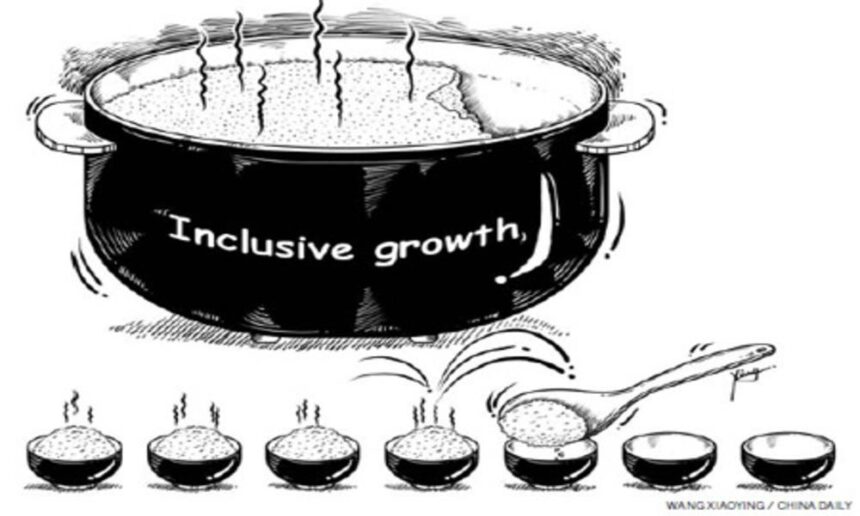In recent times, economists are saying that the measurement of a country’s economic growth and success by Gross Domestic Production is no longer satisfactory and the Japanese first suggested the application of a new measure called “Inclusive growth” instead.
Last week, Chinese leader announced at the 5th APEC Human Resources Development Ministerial Meeting in Beijing that China will accept the inclusive growth as its major development indicator.
The inclusive growth means the delivery of economic growth fruits to all people from every social classes and further measuring the economic growth in relation to social progress.
There has been no occasional policy in China.
The Chinese leader’s announcement is the sign of China’s reform in its basic economic and social policies. Up to now, this nation has pursued Deng Xiaoping’s ideology “Let some people and some regions get rich first.” to make its economy open. Behind the country’s GDP which grew in two digits over the past three decades, there has been significant distinction in the outlook of regions and livelihood of population. Compared top ten percent of China’s population income against the bottom ten percent, the gap rate was 7.3 times in 1988 and in 2007 it reached 23 times, a Beijing University Professor Li Xi says.
There is a high probability that this gap rate is quite higher than in China. Our professors, scholars, researchers and statisticians may have own calculation and have their say. China has created infrastructure nationwide, providing all cities with modern system of road, lighting water and electricity and many big cities like Beijing, Shanghai and Tianjin have become beautiful modern cities not worse than of any country of the world.
How it came that our population income gap is higher than in China when there has been almost no noticeable work done in terms of infrastructure of public utility in Mongolia? In other words, in China its wealthy people got rich by doing grandiose works and productions and conquering the world with their products, but why Mongolian rich people are getting wealthy when they created and produced almost nothing?
Ulaanbaatar City dives in smokes and dust, chokes over road traffic and its population on the verge of fleeing.
The main problem of our development is that only few people misuses the government power, seizes public properties and lands and that most of them get rich by depleting the mineral-rich land or reselling licenses at higher price, not producing any added value in the society.
Because only few people benefit from natural resources though the natural resource is the property of all people and economic growth do not affect all social classes, Mongolian government needs to pay special attention towards this change and trend emerging in global economic strategic policy. In order to development growth involves everything, every one must benefit from development fruits.
The government must make sure and guarantee that everyone has equal opportunity and rights to employment and education. If the gap between rich and poor would expand at current speed in Mongolia, then those people, who could not benefit from development, might seek for justice in their own ways and approaches, which could lead to social disorder.
It is time for the government to foresee all this and pay attention to granting the opportunity of getting involved in and benefiting from economic growth to every single person. Mongolia needs inclusive growth too.
Translated by P.Shinebayar
UB Post
October 8,2010












